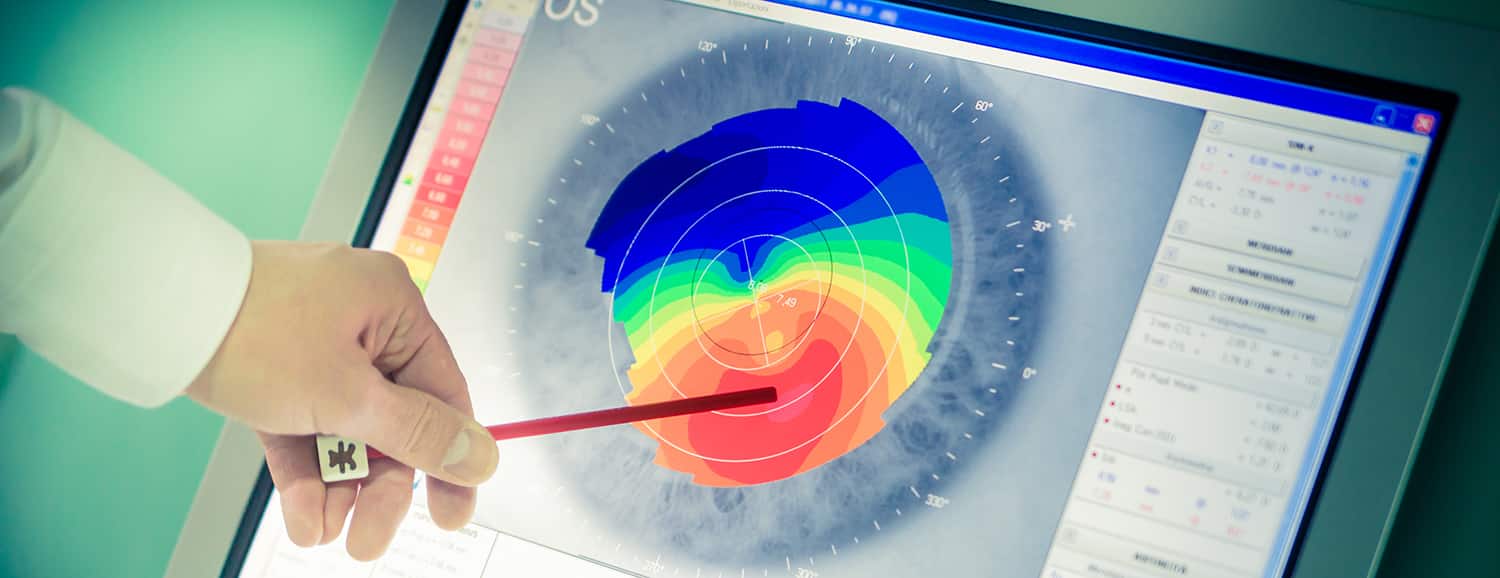Keratoconus, Corneal Collagen Crosslinking & Intacs in Queens, NY

Our practice is proud to offer advanced Keratoconus treatments to our patients
Keratoconus is a bilateral, symmetric, progressive corneal degenerative disease. This condition causes the cornea to become very thin and bulge outward, causing increased amount of nearsightness and astigmatism and severe decrease in vision.
Keratoconus affects mainly young people (early adulthood) , especially males. Causes of Keratoconus are thought to be genetic predisposition, allergies and eye rubbing and chronic eye irritation.
In the early stages of Keratoconus the vision problems can be treated with glasses and contact lenses. As the disease progresses special contact lenses called rigid gas permeable (RGP) contacts are needed. In the latest stages of the disease when there is scarring and severe corneal irregularity the only treatment option is a corneal transplant. Another surgical procedure that treats the corneal irregularity by reshaping the cornea is called intracorneal ring segments or INTACS. INTACS are FDA approved for the treatment of keratoconus. INTACS make the cornea flatter and decrease the irregular astigmatism.
The latest and most promising treatment of Keratoconus is called Corneal Collagen Crosslinking. With this treatment the use of vitamin B2 (riboflavin) and UVA light makes the cornea stronger by increasing the molecular bonds of the corneal collagen. This treatment has been used for more than 10 years in Europe and Canada with great results in slowing and even stopping the progression of the disease. In the US Corneal Collagen Crosslinking is not FDA approved as of yet. Dr. Nissirios is an expert in the treatment of Keratoconus with Corneal Collagen Crosslinking having treated a large number of patients during his cornea fellowship year. Our practice is proud to offer this advance treatment to our patients.
